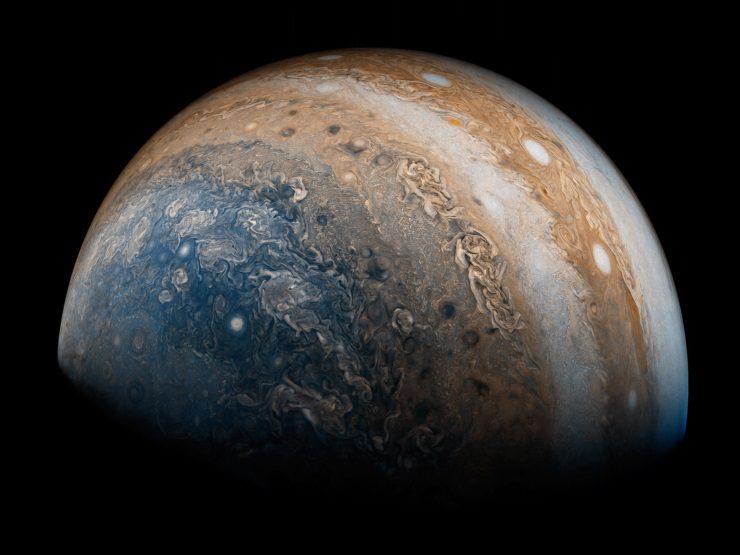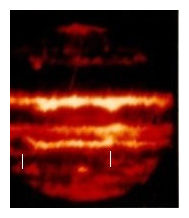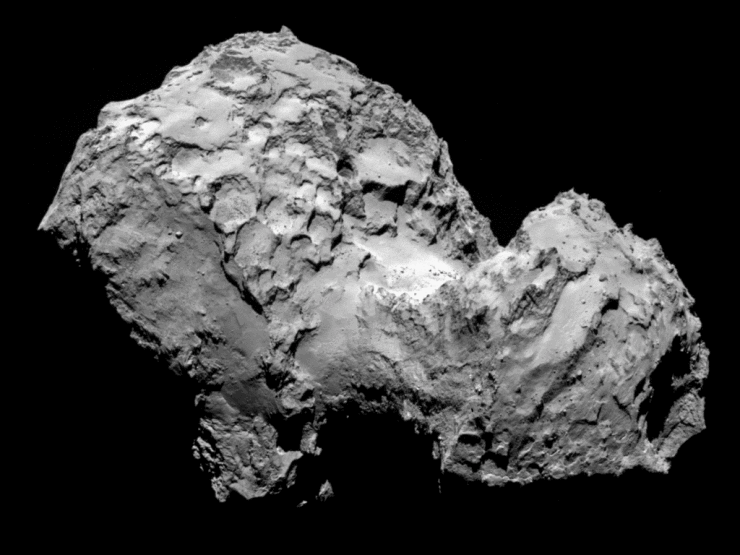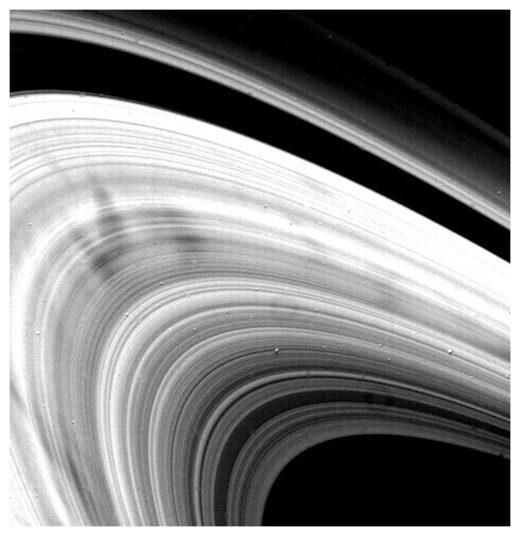
Jupiter = 0.06487, Saturn = 0.09796, Uranus = 0.02293, Neptune = 0.01708, Pluto = 0.0000
The difference between the high oblateness of Jupiter and Saturn versus Uranus, Neptune and Pluto has resulted in planetary scientists deciding that the former are 'gas giants' and the other three 'ice giants'. However, they are all ice giants - methane gas hydrate (MGH) is a form of ice which forms in the presence of ample methane. The impact on Jupiter 6,000 years BP is what made both Jupiter and Saturn appear to be gaseous.
Jupiter

This visible atmosphere is continuously being manufactured by the ongoing fusion reaction and the released aerosols are continuously settling to the surface. JunoCam has revealed that these clouds only extend as far north and south to ~70 degrees latitude, probably because they are kept aloft partially by the centrifugal force of Jupiter's rapid rotation. Poleward of this limit, JunoCam reveals the true solid surface of Jupiter, with cyclones revolving about low pressure centers, as on Earth, accentuated by the much greater Coriolis effect on Jupiter. This rotation is opposite from that of the Great Red Spot, which is not a storm. Since the fusion reaction was stronger in the past, a strip of desert-like terrain covered with atmospheric particles can be seen just poleward of the Jiu Jitsu belt. Also, because the fusion reaction, the origin of the tinted aerosol atmosphere, the Great Red Spot, is at 22 degrees South Latitude, the atmosphere extends further south than north (Figure 3.), and the south pole area is probably warmer than the north.
Saturn


Since Saturn is the closest massive planet to Jupiter, it has been bombarded with thousands of these asteroids in the last 6,000 years. The solid body of Saturn also comprises highly deuterated Methane Gas Hydrate so these impacts on its surface produced fusion explosions similar to those produced by the impacts of the larger Shoemaker-Levy 9 fragments on Jupiter, although modern science does not yet realize that fusion explosions were involved (REF). These blast material into the air, primarily water, increasing the thickness of the atmosphere, and into space, adding to the rings to this day. Scientists, judging Saturn's diameter by the cloud-tops, calculate its oblateness using the enormously expanded equatorial diameter, andcalculate a a very low density of Saturn, (δ=0.7), much less than MGH (δ=0.9), because they believe it is a gaseous planet.
Images of Saturn captured by the Cassini probe (Figure 4), actually show shadows of new material recently blasted into space by the impacts of Jupiter asteroids on its surface. Most of the mass blasted from the surface is slowed by the thick atmosphere and inflates it even further, giving it the highest oblateness of all the planets in the solar system.



he he he "Fusion"